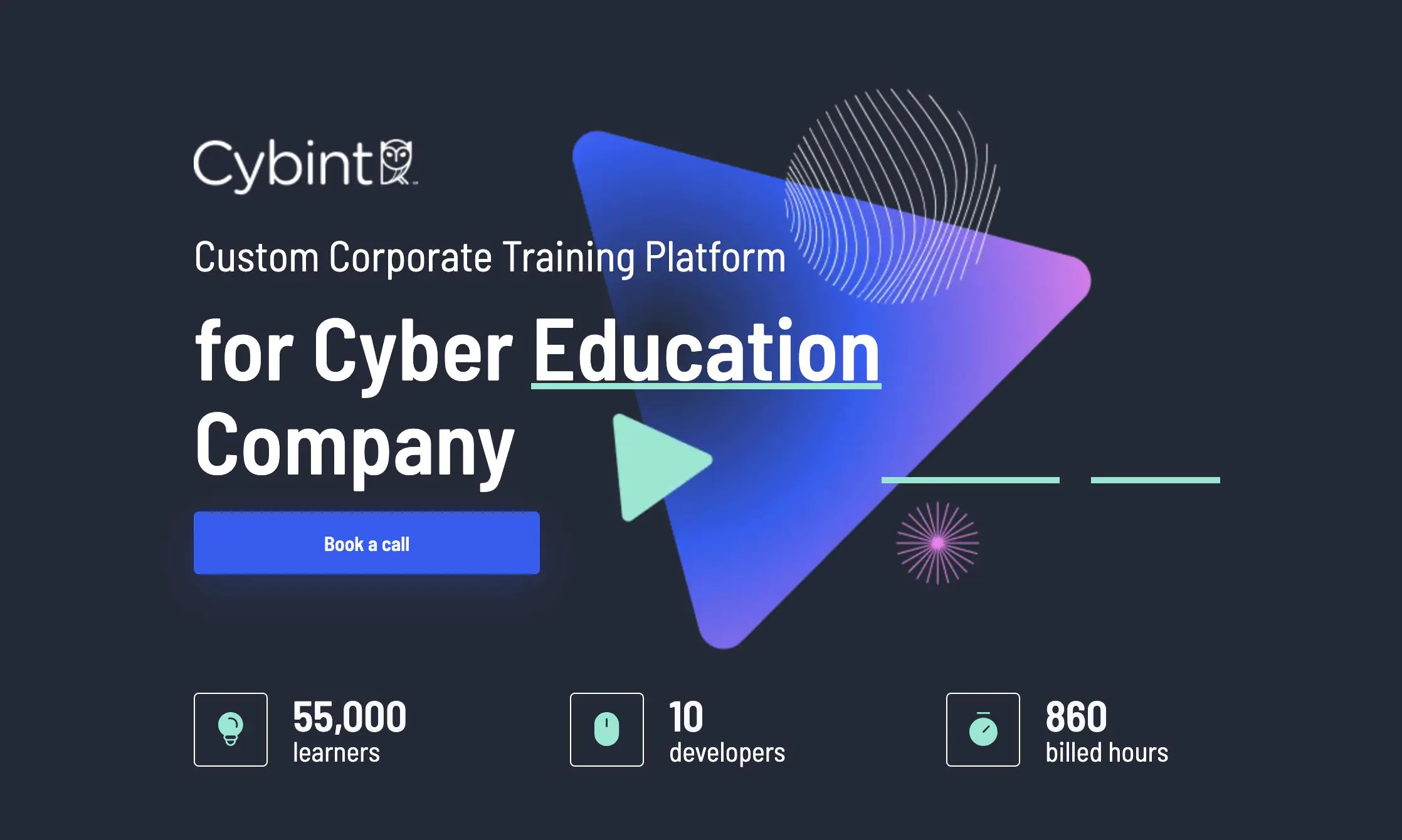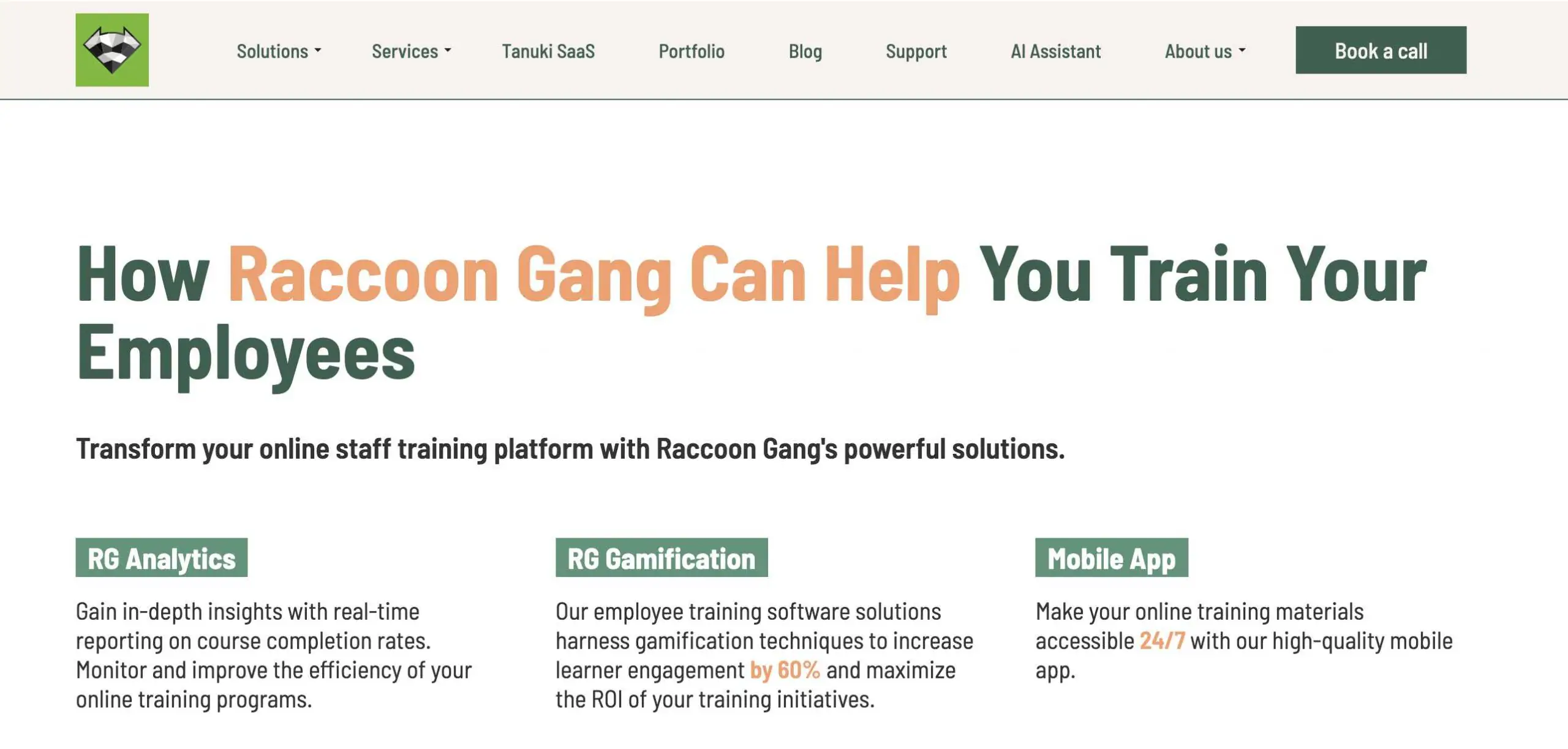Failing to implement mandatory training for employees can cost businesses millions. The average cost of non-compliance reaches $14.82 million annually, covering regulatory fines, lawsuits, and reputational damage.
Just look at the Capital One case: a user data breach cost the company a $80 million regulatory penalty.
So, mandatory training for employees isn’t just about avoiding trouble. It also helps teams work smarter, stay safe, and meet industry standards. When done right, it boosts productivity and supports business growth. And who wouldn’t be interested in that, right?
Let’s look at mandatory training as something that benefits both employees and the business.
This Article Will Walk You Through:
- Why mandatory training for employees isn’t just a checkbox but a valuable asset.
- What steps should you take to implement mandatory training in your organization?
- Which tools help track progress and keep employees engaged.
- How to find reliable partners to implement required training for employees.
For example, one of our customers, Cybint, approached Raccoon Gang with the request to develop a custom platform for cybersecurity training.
Discover More Business Cases About Training Platforms! → Explore Case Studies
Step 1: Align Training with Business Goals
Just as every journey begins with a first step, mandatory training follows a path from A to Z. At the end of this path, your business will be stronger — reducing risks, improving employee skills, and ultimately boosting customer satisfaction.
So, the first step to achieving the above benefits is aligning training with company goals. Think of this as an outline that you, as an artist, need to create before you pick up a brush and paint.
Simply put, choose the type of employee training your company requires to achieve its business goals.
Think about it:
- Risk Mitigation → This type of mandatory training helps employees understand compliance rules, workplace safety, and ethical guidelines. Its reward is reducing costly mistakes and legal issues.
- Skill Enhancement → When employees learn new tools and approaches and gain new skills at the level of their roles, they work more productively, adapt to changes faster, and contribute to overall business growth.
- Customer Satisfaction → If you want a customer to pay for work done on time, leave a good review about your company, and, ideally, come back to you with a new project, you should strive for high customer satisfaction rates.
Checklist: What Training Does Your Team Actually Need?
- Compliance Training — Covers workplace safety, data security, anti-harassment policies, and industry regulations. Essential for legal protection.
- Technical Skills Training — Teaches the skills to design, develop, implement, maintain, support, or operate a special technology or related application, product, or service.
- Customer Service Training — Refers to teaching employees to communicate, resolve issues, and create a better customer experience.
- Onboarding Training – Gives new hires the knowledge to integrate organically and quickly into existing processes.
- Leadership & Management Training – Prepares future leaders from among your specialists, develops decision-making, and so on.
“Whatever type of training you choose to start with, remember one thing: any training can be made more engaging, which increases the chance that your workforce will learn the material. Here’s how we do it for boring topics like cybersecurity compliance.” – Raccoon Gang’s Corporate Training Specialist.
Considering the above, compulsory training is worth thinking of as an investment, although it will undoubtedly require expenses in the beginning. What could be the next step on this path? The answer is to develop a Blended Learning Approach.
Step 2: Develop a Blended Learning Approach
Why did we choose this next step? Let’s be honest — when it comes to mandatory employee training, your specialists’ first reaction will be to yawn. For most employees, this type of training is simply something that must be done. You shouldn’t expect 100% enthusiasm here.
If training is added to daily tasks and your employees’ workload, it won’t motivate them to put in extra effort. This is where blended learning becomes your magic wand. How does it work?
The blended learning approach is a compromise that employees agree to because, like no other approach, it puts the learner’s interests at the center.
Blending classroom sessions with online training allows employees to learn at their own pace with remote access to materials. At the same time, offline communication with the training instructor remains available whenever questions arise.
How to Create a Blended Training Program
- Break It Down into Manageable Modules. Instead of cramming everything into long sessions, split training into bite-sized lessons.
- Combine Online Courses with Live Workshops. Digital courses allow employees to learn when it’s convenient for them. Live sessions provide hands-on practice and real-time interaction.
- Use Multimedia for Different Learning Styles. Printed training materials only provide text and images. Digital learning platforms offer a variety of resources, including videos, interactive quizzes, and simulations.
- Incorporate Scenarios. Case studies, role-playing exercises, and workplace simulations make learning more practical, rather than forcing employees to memorize abstract rules like in law school.
- Provide Continuous Feedback. When we complete a task, we want feedback from someone who knows what they’re talking about, right? Regular check-ins and assessments help employees apply what they’ve learned.
So, once again, in short. Blended learning makes mandatory annual training for employees more engaging, leading to better training outcomes overall. This becomes even more effective when employee engagement increases. We will learn how to achieve this right now.
Step 3: Foster Employee Engagement
How do we get specialists interested in the required training for employees? This can be a difficult task for an employer because, for most employees, it’s just an extra item on their to-do list.
Our mission is to turn this mandatory task into a value that they will want to receive. From words to deeds.
Proof That Engagement in Mandatory Training Can Be Improved
Here’s how some organizations have transformed required training for employees from a dull obligation into something employees value:
- A major retailer revamped its compliance training by replacing long policy documents with short, scenario-based microlearning modules. The result? A 40% improvement in training completion rates and fewer compliance violations.
- A global logistics company made safety training more engaging by adding gamification elements — badges, leaderboards, and rewards for top performers.
- A tech company tied cybersecurity training directly to employees’ career paths. Completion rates jumped from 58% to 95% in just one training cycle.
How To Convince Employees Of The Value Of Training
Pro tip: Instead of saying, “You have to complete this training,” put the employee’s personal and professional goals first:
- Career Growth → “Mastering this training puts you ahead for leadership opportunities.”
- Job Security → “Staying compliant means fewer risks for you and the company.”
- Recognition & Rewards → “Top performers in training will be highlighted in our internal newsletter.”
- Safety → “Knowing these procedures guarantees the protection of your health.”
“We actively use gamification advantages in our projects. Gamification in training leads to a 60% increase in learner engagement.” – Raccoon Gang’s Learning Solutions Architect.
By turning training into a path to success, you can drive better engagement. The next step is to adopt a tool and track progress. Let’s see how to make that work.
Step 4: Implement the Right Tools for Monitoring and Feedback
The success of any culinary recipe relies on the precise measurement of the ingredients. In our case, the success of required training for employees can and should also be measured. An LMS and training software are created for this very purpose and not only.
With the right platform, you can:
- Automate Training Assignments
- Track Progress
- Measure Training Effectiveness
- Collect Feedback
- Automate Reminders
- Generate Detailed Reports
- Integrate LMS with HR System
- Use Mobile Learning and Microlearning
“Measurement is the initial step that paves the way for control and ultimately for improvement. Without the ability to measure something, understanding it becomes impossible. If you lack understanding, controlling it is out of reach. And without control, improvement cannot occur.” – Dr. H. James Harrington, one of the ‘Fathers of Quality.’
Key Metrics to Monitor
| Metric | What It Measures | Why It Matters |
| Completion Rate | Percentage of employees who finish the training | Low rates may indicate disengagement or poor content. |
| Test Scores | Employee performance on quizzes and assessments | Helps determine if employees are retaining knowledge. |
| Feedback Ratings | Employee satisfaction with the training content | Identifies areas for improvement based on user experience. |
| Time to Completion | Average time taken to complete training modules | Ensures training is efficient without overwhelming employees. |
| Engagement Levels | Interaction rates (videos watched, quizzes taken) | Tracks how actively employees participate. |
| Knowledge Retention | Follow-up assessments weeks/months after training | Measures how well employees remember and apply what they learned. |
We have now arrived at the final step that will guide us to the answer to the question, “How to Deliver Mandatory Training That Drives Employee Success,” as outlined in the title of this article.
Step 5: Build a Culture of Continuous Learning
What happens once can be seen as an accident that may never be repeated. But when something becomes systematic, it starts delivering consistent results.
A culture of continuous learning transforms compulsory training from a compliance task into a business advantage. The biggest benefit companies gain by committing to continuous learning today is being prepared for tomorrow’s challenges.
How can we move from one-and-done mandatory training to a culture of ongoing learning? Make learning a habit, not a hurdle.
Here’s How to Make It Happen:
- When managers take training seriously, employees follow.
- Reinforce paid mandatory training for employees with microlearning and refresher courses.
- Certifications, career growth, and team shout-outs boost motivation.
- Short, well-timed training sessions fit naturally into daily work.
- Create mentorship opportunities and knowledge-sharing sessions.
Why Partner with Raccoon Gang for Mandatory Training?
When you need to implement required annual training for employees, Raccoon Gang is here to help.
- Training Platforms to make the most of what e-learning has to offer.
- Custom Solutions for Onboarding to integrate learning into your business strategy.
- Gamification Strategies to maximize employee engagement during training.
- Customer Support will guide you every step of the way as you implement new online training software.
Conclusion
Some companies still see mandatory employee training solely as an expense. However, the true ROI goes beyond simple compliance. Think of required employee training as a strategy for risk reduction, increased productivity, and talent retention.
Choose this perspective, and you’ll turn training into a competitive advantage. Use adaptive learning and modern AI tools, and you’ll have smarter training strategies that drive real business impact.
→ Achieve your business goals with professional corporate eLearning solutions.





